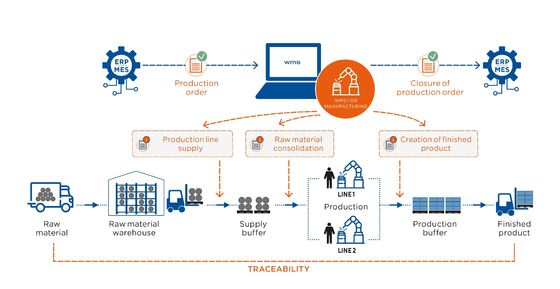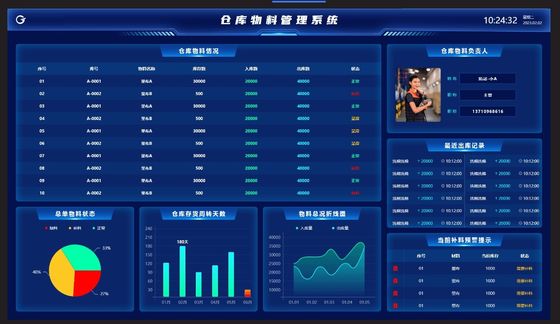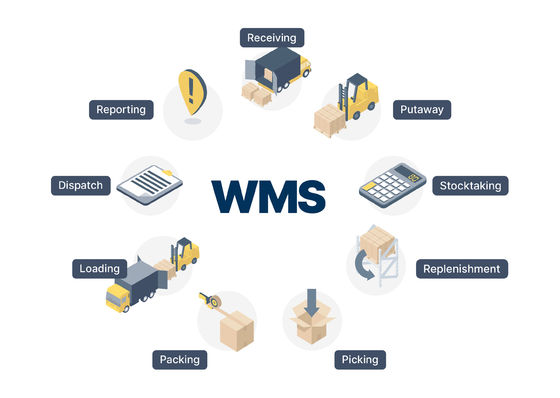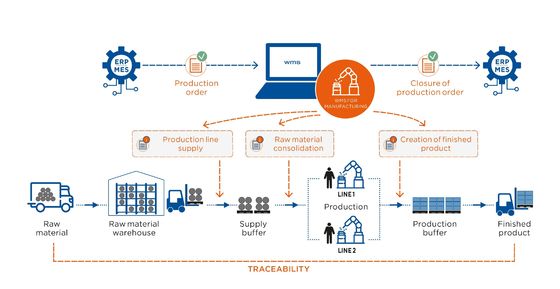-
Automated Warehousing System
-
Warehouse Equipment Systems
-
Warehouse Software Systems
-
Food Packaging Machines
-
Robotic Automation Integration
-
Chemical Packaging Machine
-
Industrial Automation Machinery
-
Machine Vision Sensors
-
Industrial Electrical Spare Parts
-
Automatic Food Processing Machine
-
Cold Chain Warehouse
WMS Warehouse Software Systems For Order Management

Contact me for free samples and coupons.
Whatsapp:0086 18588475571
Wechat: 0086 18588475571
Skype: sales10@aixton.com
If you have any concern, we provide 24-hour online help.
x| Highlight | Wms Warehouse Management System,WMS Warehouse Software Systems,Order Management Warehouse Software Systems |
||
|---|---|---|---|
Warehouse Management System (WMS)
What does a WMS do?
There are thousands of processes carried out in a warehouse every day. Orders come in, items are picked, boxes are packed, forklifts move along the aisles, and goods are loaded into trucks for delivery. The wms warehouse management system is a software application designed to create the optimal workflow for your warehouse operations by automating the decision-making logic of these processes. It connects all levels of business logic and machine control and interacts with other warehouse it systems, such as the ERP, WCS, and transport management systems.
As we can see on the image below, the warehouse management system influences all logistics processes in the warehouse.
The WMS is often called the “brain” of the warehouse – just like the human organ, it can learn and adapt to changing needs by combining different systems into one functional entity.
![]()
![]()
What are the 8 features of WMS?
Here are the most common features of the warehouse management system:
Inventory management
* keeping correct track of the inventory within the warehouse
* providing real-time visibility into stock levels, locations, and movements of goods
Order management
* prioritizing incoming customer orders based on the frequency
* processing and consolidating orders
* optimizing order workflows
Goods movement
* checking and labeling incoming goods
* selecting the optimal storage location for items based on picking frequency
* forecasting when an article should be replenished based on previous order patterns
Picking & packing
* optimizing pick rounds and routes, creating picklists
* verifying picking accuracy with RFID technology
* selecting the optimal package for shipments based on product dimensions, material, and transportation cost
Value-added services (VAS)
* controlling additional services in the warehouse
* adding value to the article without changing the article number, e.g., shoe impregnation, calibrating tv screens
* adding extra services before shipping goods, e.g., gift wrapping
Outbound goods
* labeling outbound products and creating delivery notes
* organizing shipments according to departure time and fulfillment priority
* maximizing the efficiency of deliveries by automatically recognizing what needs to be loaded first and which shipments should be sent on the same vehicle at the same time
System integration
* collecting and exchanging data with other systems, e.g., from WMS to a Business Intelligence tool
* integrating with other software such as ERP and TMS
* integrating with warehouse machinery
Reporting
* collecting and presenting various data on warehouse performance, such as inventory levels, order fulfillment, warehouse throughput, and labor efficiency
* giving a clear and visual overview of warehouse operations in real-time to facilitate decision-making and operational improvements
![]()
What are the benefits of a WMS?
So, why do companies use WMS, and what are the benefits? Below is the list of the most important aspects:
Boosting warehouse efficiency
Every resource you use in the warehouse costs money – be it space, labor, energy, or anything else. A WMS optimizes workflows and lets your warehouse operate in the most efficient way possible, which, in turn, will reduce your operational costs. Efficiency gains can also spike productivity: with a non-reserving system, your operators can work in real-time and combine assignments in the warehouse. You can consolidate your order picking, allowing you to pick multiple orders simultaneously.
Securing the scalability and flexibility of your business
In an ever-changing supply chain, your warehouse must be ready for change too. This can be implementing automation, expansion to multiple sites, or having more warehouse staff to meet customer demand. A scalable WMS SaaS solution enables you to
* save all the hassle of building up the IT infrastructure and teams to maintain the system,
* leave the burden of data security and regular system updates to your WMS vendor,
* copy software application and functionalities for multiple sites,
* quickly scale system users according to your needs, thus, you can run more flexible and future-proof logistics operations.
Utilizing your space, the best way
A warehouse’s layout is literally set in stone, so how you use this space makes all the difference. A warehouse management system is a source of valuable information that you can use to optimize the placement of goods. Based on the data it provides, you can remove end-of-life SKUs, and check which products are selling fast and which are slow movers, to adjust their placement accordingly. These actions increase your warehouse throughput while reducing operating costs.
Operating smarter with AI
Artificial Intelligence opens new opportunities for efficient and sustainable warehousing. For example, an AI-based pick group optimization module in your WMS can analyze historical ordering patterns. The system can suggest moving articles to a more optimal pick area by learning which articles are ordered together. The more information the WMS has, the more accurate its decisions will be, guaranteeing further improvement to your processes.
Saving resources to improve sustainability
A WMS can help you run more resourceful warehouse operations in various ways. For example, it reduces picking errors and prevents you from driving around with empty forklifts. In addition, by using a smart box calculation module, you can ensure that every shipment goes out in the most cost-efficient and least wasteful way possible, cutting down on the amount of air shipped and material used.
Providing seamless integration with your other systems
We live in the era of connectivity, and warehouses are no exception. A best-of-breed WMS will give you peace of mind in this area for two reasons:
1. No matter how big or small your business ecosystem is, it seamlessly integrates into it. By taking information from your ERP, CRM, or TMS, it generates instructions to facilitate better operational efficiency in the warehouse.
2. It supports your warehouse automation efforts. Be it AutoStore, high-bay shuttle, pick robots, you name it - the WMS integrates with all machinery and harmonizes your automated and manual processes.
Improving visibility and traceability
Efficiency gains, compliance with regulations, and customer delivery experience are all drivers for improving visibility and traceability throughout the supply chain. By verification/scanning individual articles in warehouse processes, a warehouse management system enables control on the item level. It can also connect the nodes of the delivery chain, so you can notify customers about when their orders are picked and packed, thus improving customer satisfaction.
![]()
![]()
![]()
![]()








